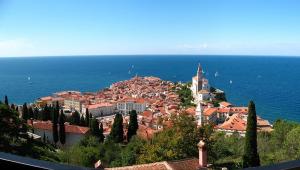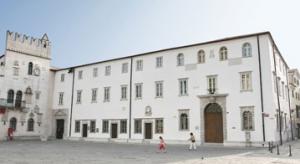The Country

For more information about Slovenia visit www.slovenia.si
The City

It is one of the oldest towns in Slovenia; it was developed on a rocky island with the Roman name Capris.
Some facts:
• A Mediterranean city, the characteristics of which have been hewn by its rich history.
• One of the most modern and largest cargo ports in this part of the world, located at the junction of maritime and land routes between the Mediterranean and Central Europe.
• A university city with a rich general library, theatre, museums and galleries.
Through many different events, visitors can discover splendid Venetian-style palaces, magnificent churches, and many small picturesque squares.
Today, Koper is a commercial and tourist city that is continuing to develop its offerings in terms of seaside resorts, nautical tourism, sports and shopping.
For more information about Koper, visit: www.koper.si
The University

The Dhillon School of Business has 1,500 undergraduate students and 750 postgraduate students. The faculty employs more than 90 higher education lecturers and researchers and 400 professional associates.
Fun Facts
- Maribor, the second-largest city in Slovenia, is home to the oldest vine in the world. The over 400 year old Zametovka vine growing outside the Old Vine House in Maribor is registered in the Guinness Book of Records.
- Slovenia has one of the largest brown bear populations in Europe.
- Slovenia is a country with the largest number of religious buildings per capita in Europe. There are more than 3,000 churches, chapels and religious monuments.
- On Zalarjev Vrh near Idrija in Slovenia you can see the traces of real dinosaurs.
- The Vilenica cave is the oldest show cave in Europe. Tourists from around the world have been visiting it since 1633.
- The canteen in the coal mine in Velenje is the lowest-lying dining room in Europe. It’s 160 metres below the surface.
- The Slovene Davo Karnicar became the first person to carry out the complete ski descent of Everest, the highest mountain in the world.
- The Slovene ultra-marathon swimmer Martin Strel was the first man to successfully swim the Amazon and the Mississippi river.
- In Slovenia you can pay to spend the night in a prison cell. The Celica Hostel in Ljubljana is a former military prison with comfortable and imaginatively designed cells for guests.
- Some scenes from the film Chronicles of Narnia: Prince Caspian were filmed in the Soca Valley in Slovenia.
Top 5 Places to Visit
- Piran: The beautiful coastal town of Piran juts out into the Adriatic Sea. The old town’s winding streets are lined with Venetian style buildings. Its most impressive attraction is St Georges Church that stands tall over the town and from the hill that it sits on you’ll see all the way to the ocean.
- Skocjan Caves: This system of underground caves is a UNESCO world heritage site and has the highest cave hall in Europe. This huge, underground canyon can be crossed by a narrow bridge where you truly get a sense of how giant the space is. The caves are filled with impressive stalagmites and stalactites and are home to 15 species of bat.
- Vogel: Although not the most obvious destination for winter sports, Slovenia has many high-quality ski-slopes and cross-country trails. Vogel, for example, is sat on a plateau above the majestic Bohinj Lake and caters well for beginners and experienced skiers alike. Their season runs from December all the way through until May and what’s more, it is considerably cheaper than more well-known resorts.
- Bled: This picturesque, fairy-tale town is Slovenia’s most popular resort, and rightly so. People flock here to enjoy the stunning views of the lake with its small church that sits on an islet. Beyond it you can see the gothic Bled Castle that is perched on the cliff’s edge. It is a great town if you want a more active holiday as it is perfect for cycling, canoeing, and hiking and for the child in you, you can take a chair lift to the top of Straža ski slope and toboggan back down – it’s an amazing adrenaline rush and is a surprisingly good way to take in the views.
- Predjama Castle: This700-year-old castle sits on a 123m cliff and is built into the mouth of a cave. It became famous due to the legend of the Robinhood-esque knight named Erazem Lueger – a robber-baron who stole from the rich and gave to the poor and fought the established order. Go in July and you can watch their annual medieval duelling tournament.